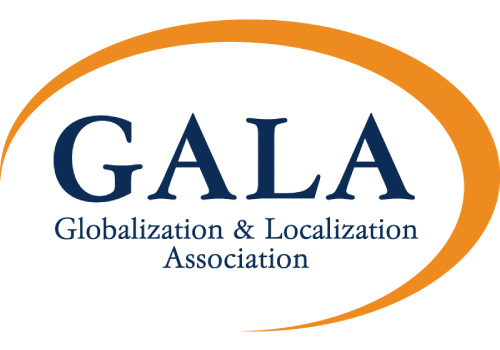The 13th International Dubai Film Festival closed the 2016 film festival season, on the 14th of December last. The week-long event saw a staggering line-up of 156 films from 55 countries, and in more than 44 languages. An article in Variety, even indicated that the festival’s “Dubai Film Connection” co-production platform had “become the only bona-fide co-production platform in the Middle East.” Here at Haymillian, we have witnessed a growing demand over the past 12 to 18 months for our subtitling and dubbing services in Arabic, concrete proof that viewers in the MEA region are increasingly open to consuming a diversity of content from different regions.
In terms of content consumption and most watched TV genres in the Middle East, comedy tops the list, followed by drama, news and sports (56% comedy, 44% drama, 37% news, 22% sports), as highlighted in the annual survey – Media Use in the Middle East, 2016*, undertaken by the Northwestern University in Qatar (NU-Q) and Doha Film Institute (DFI). Interestingly, exposure to TV from outside the Arab region is low, with just one in 10 or fewer nationals saying they watch TV content from the U.S., Europe, Turkey, or India. However, those who access TV content online are more likely to watch U.S. programming, especially in Qatar, the UAE, and Tunisia (52% Qatar, 28% UAE, 26% Tunisia).
OTT really took flight in the MEA region in 2016 and it seems that this is just the beginning: The Middle East and Africa OTT TV and Video Forecasts, published by Digital TV Research, reports that MEA SVOD revenues will increase tenfold from $124 million in 2015 and onto $1,240 million in 2021. Simon Murray, Principal Analyst at Digital TV Research stated in a press release last May that “Fixed broadband penetration is low in many of the region’s countries, so more OTT viewing will take place on smartphones. Digital TV Research forecasts that 304 million smartphone subscribers will be watching OTT TV & video at least once a month by 2021 – more than triple the 2015 total and up from 5 million in 2010.”
The above statistics and trends tell us a lot about the most popular genres enjoyed per country and how online video (especially mobile) will become a major platform for content consumption in the next few years. So, if you are looking to bring your audio-visual creation to the MEA region, here are a few pointers on how to approach the adaption process and the many censorship rules that must be adhered to:
1. The use of modern standard Arabic is generally the norm when localizing media.
Spoken Arabic can greatly differ depending on the region; some varieties of Arabic in North Africa are incomprehensible to an Arabic speaker from the Levant or the Persian Gulf. From our experience, rather than matching the dialect of each target region, content is generally localized into modern standard Arabic, so that can be understood in all Arab speaking countries across the Middle East. The same goes for dubbing, a neutral version is used.
2. Adjust the original story to meet stringent censorship requirements.
All media entertainment content broadcast in the Middle East is strictly regulated and must abide to the cultural, moral, political and religious contexts of the region. To meet the censorship guidelines, you must be willing to adapt your storyline in accordance with the regulatory rules of the target country, even if at times that means creating a cut version of the original. Examples include replacing any alcoholic drinks with a local non-alcoholic beverage or covering it; as well as cutting any violent, sexual or nudity scenes.
3. When dubbing make sure that nothing gets lost in translation.
When two different language families meet, the translation challenges are many – differences in mode of expression, grammar, syntax, and meaning systems exist. So how do you translate the untranslatable? You need to find a translator who is deeply familiar with both cultural backgrounds and languages. Someone who can find creative ways of expressing what is essentially untranslatable. Once the translation is done, it is important that the script reads fluently as if it were originally written in the target language.
After all, a good dub should always look like the content was recorded in the language the viewer hears and that the dialogue matches the onscreen lip movements. When it comes to timing the sentence length and the number of syllables used, the script will often need to be edited once again for optimum text length.
4. Shows imported in their original language require subtitles and partial re-editing.
Some viewers prefer to watch foreign dramas in their original language, with an increasing number of people consuming well-known international content online. Nonetheless, you must give viewers an option of switching on subtitles so that they can follow the storyline. As previously detailed in the dubbing section above, the translation process is of paramount importance. It is also important to note that even though the content will be shown in its original format, it still needs to be edited to comply with the censorship regulations of the target region.
5. Consider the distribution platform as time and screen space will vary.
Given that the number of viewers who access content online via a mobile device is set to explode in the coming five years, it is essential that you know on what platforms your content will be distributed. If you are adding subtitles, closed captions or audio descriptions to your video it is crucial that your localization partner can support a wide range of output formats such as CAP (Cheetah), Scenarist Closed Captions (SCC), MCC CEA-708 (MCC) TTML, QuickText (for QuickTime), WebVTT (for HTML5), RealText (for Real Media), SMTPE-TT (XML), EBU.STL, to name a few.
To conclude, there are promising opportunities for content creators who are ready to rise to the censorship and cultural challenges of the MEA region. In our case, we will also be keeping a close eye on the progress of OTT and mobile video along with short video formats.
Footnote:
* Dennis, E. E., Martin, J. D., & Wood, R. (2016). Media use in the Middle East, 2016: A six-nation survey. Northwestern University in Qatar. Retrieved from www.mideastmedia.org/survey/2016.







